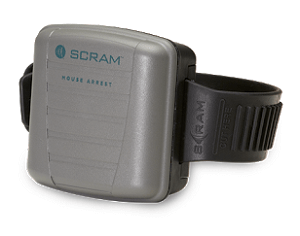How Law on ‘Sobriety Ankle Tags’ Works
The new rules on ankle tags follow two successful pilot schemes. Under the alcohol-monitoring scheme:
- Courts can now hand out ‘alcohol abstinence orders’.
- Offenders of alcohol-fuelled crime would need to wear an electronic tag and abstain from drinking alcohol for up to 120 days.
- Ankle bracelets monitor alcohol intake (through sweat levels).
- Detection can result in further sanctions issued by a court.
So, what is an alcohol-monitoring ankle bracelet and how does it work? Often called SCRAM bracelets in America – SCRAM stands for Secure Continuous Remote Alcohol Monitoring.
Ankle tags provide a way for courts to monitor criminals who have committed alcohol-fuelled crime. Some 2,000 offenders will have bracelets fitted so courts can track whether they are drinking alcohol.
Electronic tags conduct around-the-clock monitoring of perspiration from offenders who are wearing them. This is how a device determines whether alcohol has been consumed – or not.
How an Alcohol Ankle Monitor Works
- The alcohol ankle tag takes a reading every 30 minutes. It is able to detect alcohol secreted through sweat glands and transmits the results to the base station.
- The base station relays the results via the Internet to the official monitoring centre for further analysis.
- A probation officer is informed if it detects alcohol and the offender is summoned back to court.
Drinking an alcoholic beverage would be in breach of the alcohol abstinence order. This means the offender can be returned to the court and be liable for further sanctions, which can include:
- A fine.
- An extension to the length of the order.
- Imprisonment.
The previous pilot schemes took place across London, Humberside, Lincolnshire, and North Yorkshire. The results showed that on 97% of the days they were monitored, the offenders were alcohol free.
Furthermore, the wearers reported a positive impact from alcohol abstinence in relation to anti-social behaviour, their livelihood, and their general health and wellbeing.
Benefits of Wearing Alcohol Tags
The principle aim of these tough community sentences is to punish the worst offenders and rehabilitate them by addressing the causes of their alcohol-related conduct.
 In highlighting other important issues, the Crime, Policing and Justice Minister also pointed out:
In highlighting other important issues, the Crime, Policing and Justice Minister also pointed out:
- The results of alcohol-fuelled crime wrecks community safety and places an unnecessary strain on frontline services.
- Besides punishing the worst criminal offenders, the use of smart technologies, such as sobriety tags, can help them turn their lives around.
- Tough prison sentences remain appropriate in most cases. But, the alcohol tag scheme can help to cut reoffending rates.
Official estimates issued by the Office for National Statistics suggest people who are drunk are responsible for committing two out of every five violent crimes.
If you were wondering:
The smart technology is capable of distinguishing between different types of alcohol-based products (e.g. hand sanitiser). It can also detect if the user attempts to block the space between the wearer’s skin and the electronic tag.
Note: The Office for National Statistics (ONS) produce further information about the nature of violent crime in England and Wales.

